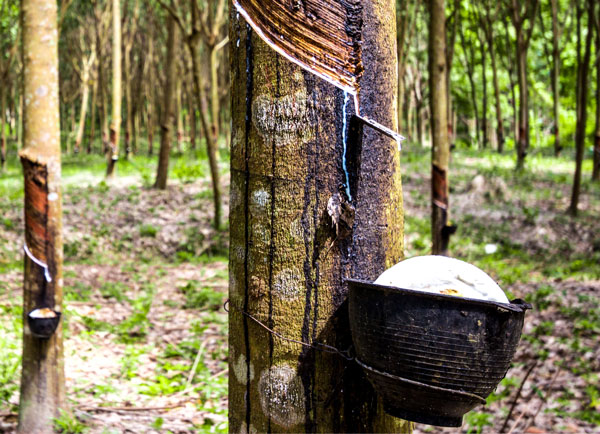
Ivory Coast’s remarkable surge in rubber production has the country poised to secure its place among the world’s top three producers. With the country’s farmers cashing in, international buyers are climbing in too.
SPECIAL REPORT | BIRD AGENCY | Côte d’Ivoire is on a roll with its rubber production, with the country close to becoming the world’s third-largest natural rubber producer by volume.
According to research firm, ReportLinker, Ivorian natural rubber exports are set to reach US$936 million by 2026, growing at an average of 2.1% year-on-year, which would see Ivory Coast disrupt the established order to claim third position worldwide.
In 2022, Thailand was the world’s largest rubber producer, with 4,753,000 metric tons, Indonesia was second at 3,135,000 metric tons, Vietnam was third, with 1,292,000 metric tons and Côte d’Ivoire was close behind, with 1,286,000, according to German online statistics and market insights company, Statista. China, in fifth, is further back with 853,000 metric tons. Of the top four, Côte d’Ivoire’s year-on-year growth was by far the greatest between 2020 and 2022.
The West African country is already the world’s third largest rubber exporter, after Thailand and Indonesia.
Rubber is used mostly in the motor vehicle industry, which takes up over half of all out put but is also a key component in a wide range of manufactured goods, from fridge seals to mountings.
The growth in production comes despite persistent challenges posed by climactic extremes and disease outbreaks, which have historically impacted global rubber prices and hindered optimal gains for the farmers.
A 2018 analysis by the Association of Natural Rubber Farmers unveiled the stark incongruity that farmers in the sector experience.
“While controlling 60% of Africa’s rubber production, these farmers earn a meager amount, barely scraping the $1000 per tonne mark,” it outlined.
This gap has further been exacerbated by a declining global demand for rubber imports. However, new international markets and opportunities offer farmers fresh hope.
A recent news report from the state news agency, Fratmat.info, sheds light on a groundbreaking deal that envisages the export of a substantial 15,000 to 20,000 tonnes per year of Ivory Coast’s rubber seeds to Italy.
This is after the Federation of Professional Agricultural Organizations of Producers joined forces with Italian energy powerhouse, Eni, to forge an agreement that could avail extensive economic opportunities for rubber farmers.
Edward Meledje, an expert in soft commodity exports based in Abidjan, emphasised the game-changing nature of this pact, highlighting the opportunity for a new market stream to increase demand.
“Getting consistent markets has been an issue especially for rubber with the EU limiting export flows from Africa,” he explained.
The breakthrough adds to a series of recent market expansions, including a burgeoning relationship with India. Last year, Ivory Coast was the fourth-largest exporter of natural rubber to India, contributing an impressive 28% of the total shipments to the Asian country.
“We are looking at possible upscaling of supply volumes, thus even higher returns for the farmers,” Meledje noted.
Rubber makes up one-fifth of Côte d’Ivoire’s GDP and the commodity is seen as a potential driver not only for the wider economy but to revamp “last-mile” economic values for farming communities.
****
SOURCE: bird story agency
 The Independent Uganda: You get the Truth we Pay the Price
The Independent Uganda: You get the Truth we Pay the Price





